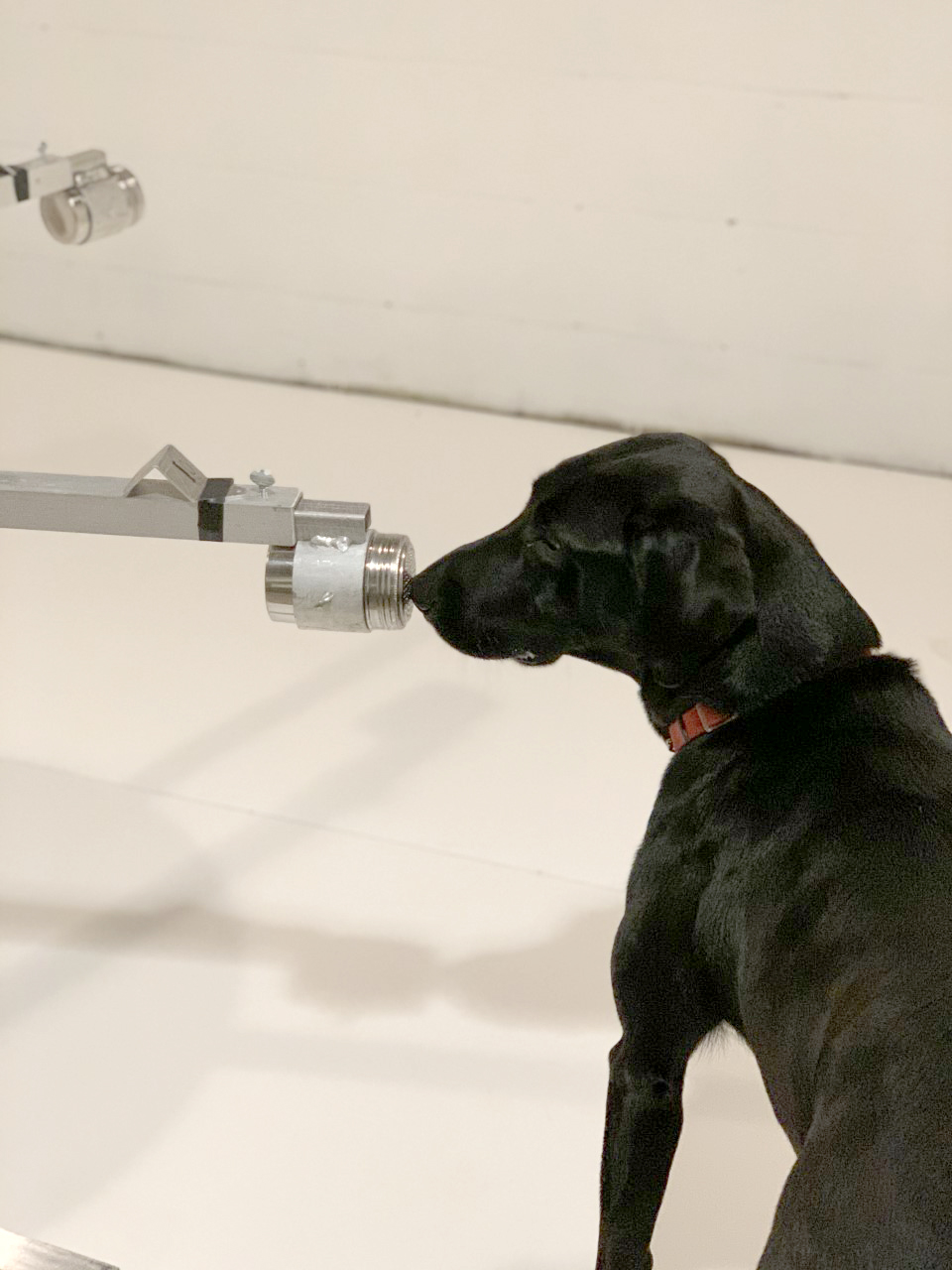A dog’s nose is a wondrous thing. He has the ability to separate breathing from smelling, to exhale without blocking incoming air and scents, and to use each side of his nose separately to determine the source of an odor. Paired with a remarkable scent memory, dogs can learn to sniff out cancer, diabetes, tuberculosis, malaria, and now COVID-19, from smell alone.
Training
The Army’s Combat Capabilities Development Command Chemical Biological Center in Aberdeen Proving Ground, Maryland, is working with the University of Pennsylvania School of Veterinary Medicine Working Dog Center, to prove dogs can provide COVID test results faster and with more accuracy than current methods. Training takes six to nine weeks for an already scent-trained dog and three to six months for a dog who needs to learn the basics before moving on to more advanced sniffing. To begin, dogs learn to choose between containers with samples of saliva, urine, sweat, or sebum, the oily substance on skin, from a symptomatic COVID-19 patient, an asymptomatic patient, or someone who doesn’t have the virus. Some containers are empty, and some contain a tennis ball or food as a distraction test. Dogs who respond successfully are rewarded with a favorite toy or treat.
The University of Pennsylvania’s School of Veterinary Medicine uses virus samples from the University of Pennsylvania and the Children’s Hospital of Philadelphia. Dogs learn to alert to biomarkers associated with a human body’s reaction to COVID rather than the virus itself. In samples, the live virus is deactivated for the safety of dogs, handlers, and research staff.
In March, Dominique Grandjean, a professor at the Veterinary School of Alfort, France, working with the international research team he leads, began to COVID-train 16 experienced detection dogs using positive reinforcement techniques (the dogs received a toy every time they correctly alerted). Each dog, sniffing between four and ten samples, required less than a day to memorize the specific COVID-positive sample odor. In a study published December 10 on PLOS ONE, researchers note that in a context where there is a lack of diagnostic tests available to perform mass detection of COVID, dog olfactory detection could be a rapid, reliable and inexpensive way to pre-screen people or perform rapid checking if necessary.
The London School of Hygiene and Tropical Medicine, partnering with the nonprofit Medical Detection Dogs, created a government-funded study to train half a dozen bio-detection dogs to provide a fast, effective, and non-invasive diagnostic. On a grand scale, they can be deployed to large gatherings and ports of entry to detect infected people.
Current rapid response tests provide results in five minutes; a dog knows the answer in seconds, with higher than 90 percent accuracy, and can screen up to 250 people per hour.
Working Around the World
The Helsinki airport in Finland has four sniffer dogs who can detect the virus in less than 10 seconds and are nearly 100 percent accurate.
At the University of Adelaide in Australia, human sweat is used to train dogs to alert even before symptoms appear
In Dubai, United Arab Emirates, dogs are used as backup testing for airline passengers who have proof of a negative result. A swab is used to take a sample of armpit sweat. The dog sniffs the swab, not the person. About 10 percent of arriving passengers are randomly tested.
In partnership with 27 Health, BioScent K9, a Manatee County nonprofit in Myakka, Florida, started training Beagles and Beagle-Basset mixes. Known for their super-sniffers, they’ll be used in schools, stadium lines, and public areas. Once the dog alerts, a saliva test using 27 Health’s device will be given, providing immediate results, doubly confirmed. The adult dogs in the program will be ready to work early next year.
Why Aren’t There More Sniffer Dogs?
There aren’t enough trained dogs and handlers to sample-sniff everyone. Training a dog for two or three months is an expensive endeavor. Specialized equipment is needed. And not all dogs are suited for the intense work.
Samples from COVID patients, both symptomatic and asymptomatic require special handling. It’s still unknown if COVID exposure could affect dogs or if the dog could carry the virus person-to-person in crowds such as concerts or conventions. Erring on the side of caution, dogs are generally in a separate area to test samples.
Some people are afraid of dogs, allergic, or have a religious reason to avoid them.
Technicians in diagnostic laboratories don’t need to worry about dogs replacing them, but canine COVID sniffers are an important aid to disease detection.
This article was reviewed/edited by board-certified veterinary behaviorist Dr. Kenneth Martin and/or veterinary technician specialist in behavior Debbie Martin, LVT.








